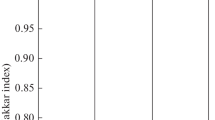The polyopisthocotylean monogeneans, most of which are fish gill parasites, are so different from their monopisthocotylean relatives that separate origins have been suggested for the two groups, i.e. the monogeneans have been regarded as paraphyletic rather than monophyletic (Mollaret et al., 1997; Justine, 1998). There can be little doubt from consideration of the differences between them that they have been separate for a very long time. However, the larvae of polyopisthocotyleans share with those of monopisthocotyleans some basic features, such as 16 hooklets, each with a shield- or gutter-shaped sclerite (domus), two pairs of eyes and three bands of propulsive ciliated cells, indicating divergence from a common ancestor, albeit a very long time ago. This monogenean divergence must have taken place before the modern groups of fishes (holocephalans, elasmobranchs, chondrosteans, teleosts; see Appendix 1) had emerged from the ancestral fish stock, because each modern group of fishes is parasitised by a unique group of polyopisthocotylean monogeneans. Thus, as the ancient fish stock radiated and differentiated into the fishes we recognise today, each newly emerging group of hosts inherited a sub-set of polyopisthocotylean monogeneans, which, in isolation, developed its own unique features. This provides an excellent example of co-evolution between hosts and parasites, the consequence of which is that related hosts have related parasites (so-called ‘Fahrenholz’s Rule’). This is exciting enough, but it appears that co-evolution did not end with the fishes. It is generally accepted that amphibians have evolved from fish ancestors, although there is some disagreement as to which group of ancient fishes provided the raw material for this important evolutionary development. Polyopisthocotylean fish parasites apparently had sufficient evolutionary flexibility to survive the fundamental upheaval that accompanied the host changes from a fully aquatic to an amphibious lifestyle. These adaptable parasites are represented today by polystomatid polyopisthocotyleans, many of which inhabit the bladders of anuran amphibians (frogs), for example, Polystoma integerrimum in the bladder of the common frog, Rana temporaria.
Access this chapter
Tax calculation will be finalised at checkout
Purchases are for personal use only
Preview
Unable to display preview. Download preview PDF.
Similar content being viewed by others
Rights and permissions
Copyright information
© 2004 Springer
About this chapter
Cite this chapter
(2004). Monogenean gill parasites – polyopisthocotyleans. In: Leeches, Lice and Lampreys. Springer, Dordrecht. https://doi.org/10.1007/978-1-4020-2926-4_6
Download citation
DOI: https://doi.org/10.1007/978-1-4020-2926-4_6
Publisher Name: Springer, Dordrecht
Print ISBN: 978-1-4020-2925-7
Online ISBN: 978-1-4020-2926-4
eBook Packages: Springer Book Archive




